
It is now required to remove poison-hemlock on public property in King County. At the 2019 Weed List Hearing the King County Noxious Weed Control Board added poison-hemlock to the list of regulated noxious weeds for King County, with control required on public property and public rights-of-way in cities and unincorporated areas throughout the county. We want to help volunteers, homeowners, and concerned citizens understand what this change means, so we can work together to eradicate poison-hemlock in King County.
So, what’s the big deal?
There are two main reasons why poison-hemlock is now required for control on public property in King County.
First and foremost, poison-hemlock is very toxic, spreads quickly by seed, and poses a public health threat, especially in areas with public access where people might confuse it with edible plants that it closely resembles. Poison-hemlock is acutely toxic if eaten, and will quickly kill humans, pets, or wildlife upon ingestion. It contains alkaloid toxins that cause rapid respiratory paralysis. All parts of the plant are poisonous and even the dead canes remain toxic for up to three years. Eating the plant is the main danger, but it can also cause problems through the respiratory system and skin for some people.
Secondly, It is also highly invasive and can form large, dense stands excluding other plants. Poison-hemlock is found in many places in King County, including roadsides, trails, fields, parks and around homes and gardens.
How to identify poison-hemlock
Leaves:
- Lacy and fern-like (pinnately dissected)
- Bright green
- Finely divided
- Toothed on edges
- Musty, unpleasent smell
Stems:
- Very tall (6-10 ft.) when blooming in Spring and Summer
- Bright green with reddish or purple spots and streaks
- Not hairy
- Hollow
- Often with a whitish coating that rubs off
Flowers:
- Tiny, white flowers in clusters on ends of branched stems
- Flower clusters are shaped like little umbrellas
Roots:
- Large, fleshy tap-root
- Yellowish/dirty white color
- Carrot-like in appearance
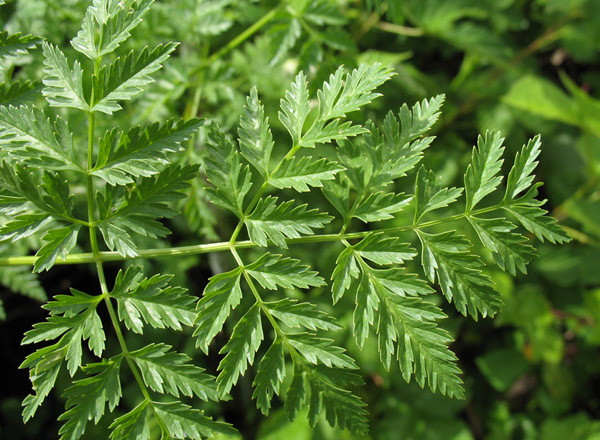
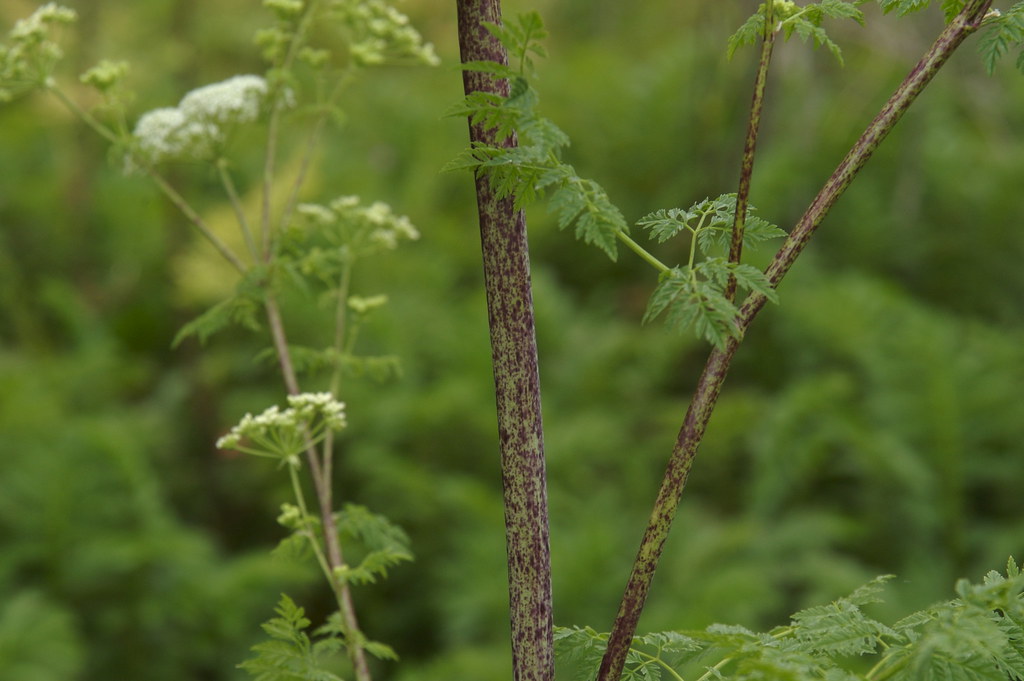
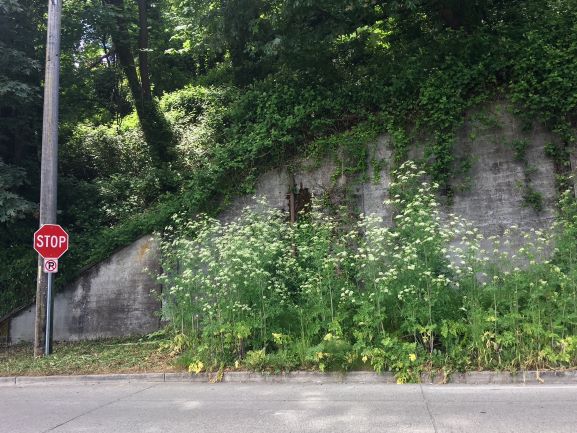
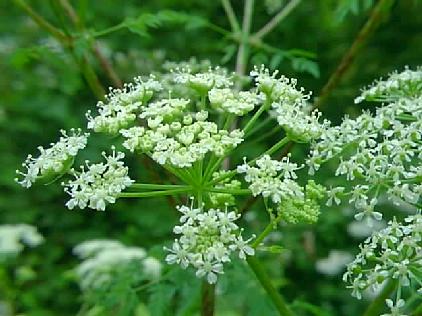

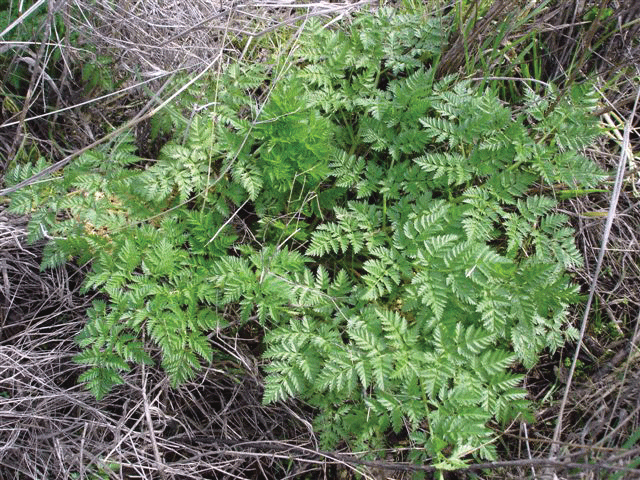


Poison-hemlock look-a-likes
There are several plants that can be confused for poison-hemlock.
Cow Parsnip (Heracleum lanatum)
This native perennial loves wet roadside ditches. Although this plant is native, it still poses a health threat to humans. Sap can cause rashes and burns similar to giant hogweed.
giant hogweed (Heracleum mantegazzianum)
This invasive, noxious weed has clear, watery sap with a toxin that can cause photo dermatitis – skin contact followed by exposure to sunlight produces scarring burns. Giant hogweed is a Class A noxious weed in King County, meaning eradication is required. If you think you’ve found giant hogweed report it to King County Noxious Weeds, and allow them to remove it, rather than attempting to remove yourself.
wild carrot (Daucus carota)
This unregulated class C invasive plant does not have the same health hazards as the other look-a-likes. It is mildly poisonous to livestock.
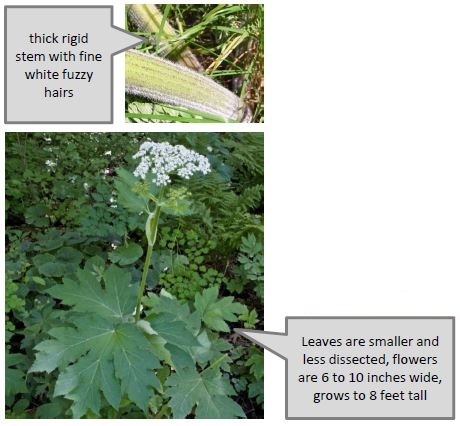
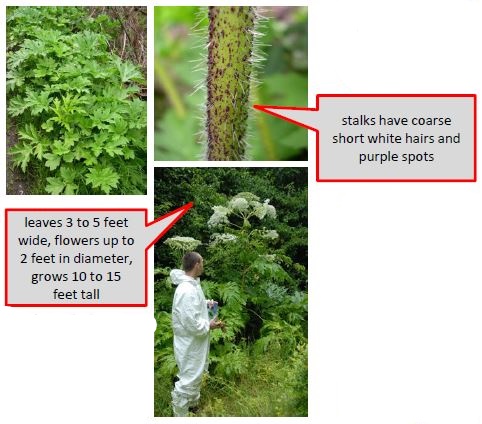

What to do if you find poison-hemlock on your property
If you locate poison-hemlock on your private property you are encouraged to remove it using the necessary precautions listed below.
What to do if you find poison-hemlock in a park or other public land
What Forest Stewards should do with poison-hemlock at A GSP site
If you locate a small patch of poison-hemlock at your GSP site you are encouraged to remove it using the necessary precautions listed below. Poison-hemlock removal is not a task suited for kids or large work parties, so plan accordingly. If you have a large patch, or you do not feel comfortable removing it yourself, request GSP professional support.
How to remove poison-hemlock
Follow all necessary safety precautions
- Always wear gloves, long sleeves, long pants, and closed-toe shoes (i.e. no bare skin)
- Do not remove with children present
- If you feel dizzy, nauseous, or any other alarming symptoms while working, take a break, get some fresh air, and wash your hands and face. Sometimes people have reactions through breathing in toxins, or skin contact, although it is not common.
Remove as much of plant as possible
- Dig out plant including large tap-root
- Place in compost bags for removal from site
- Do not place in compost piles for on-site composting
- Mulch heavily after removing poison-hemlock to suppress seed bank
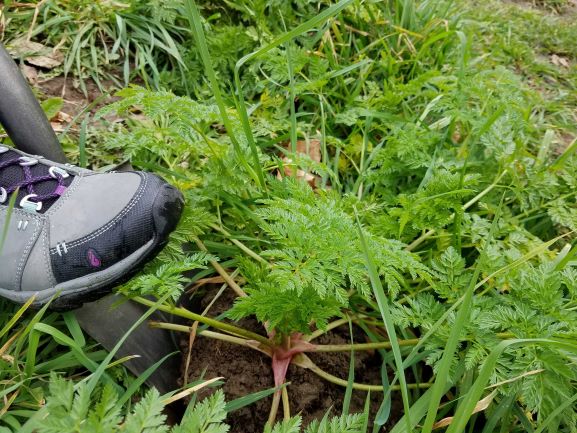
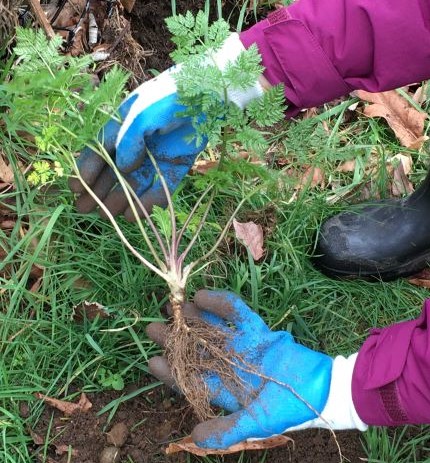
For more information, and advice about noxious weeds in King County, please contact the King County Noxious Weeds Program at kingcounty.gov/weeds, 206-477-9333 or, noxious.weeds@kingcounty.gov.
Photo credits: Sasha Shaw, Maya Klem, K. Peterson,

Trackbacks/Pingbacks